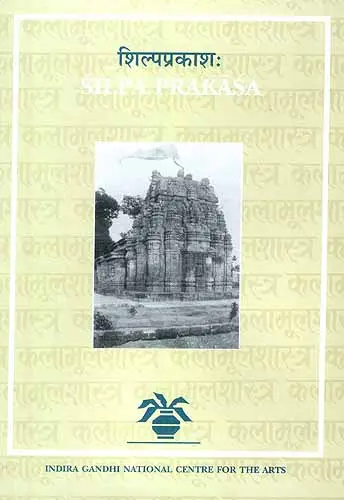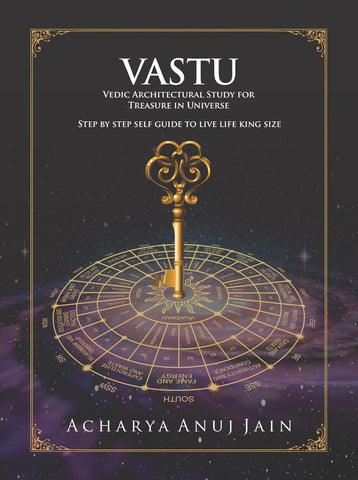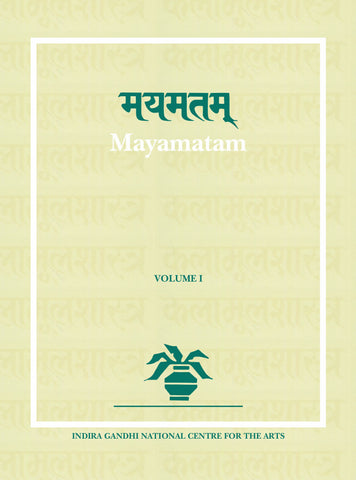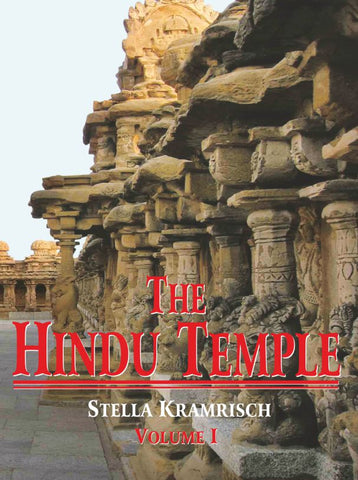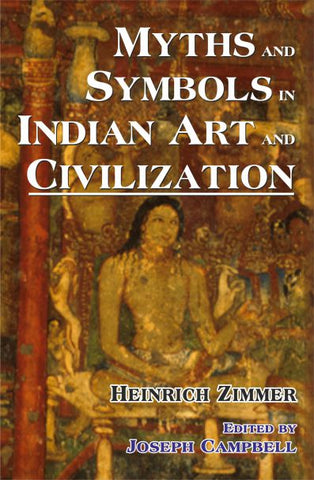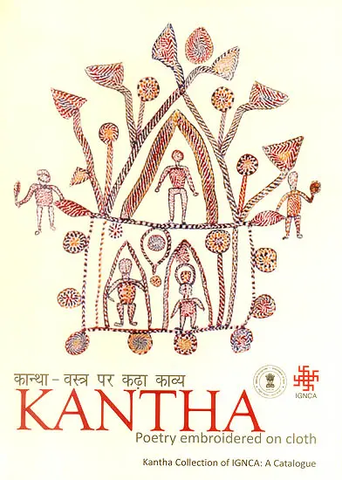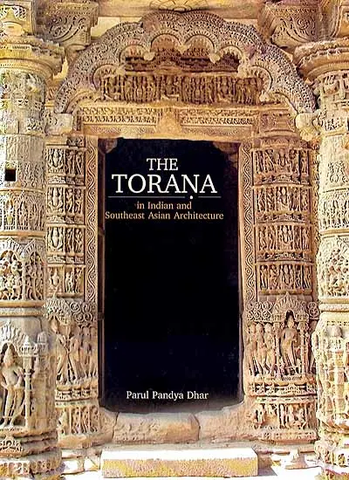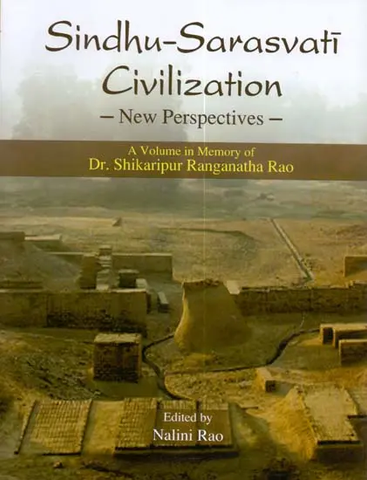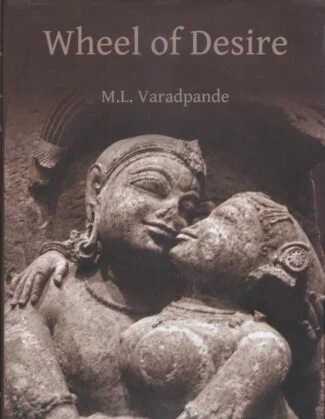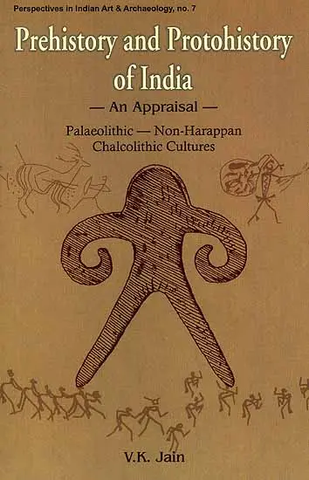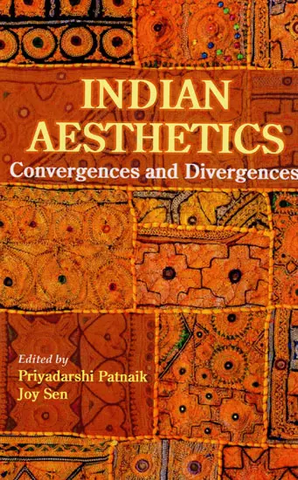Your cart is empty now.
The Silpa Prakasa is an important edition to the existing literature on Indian Silpa texts." (V.S. Agrawala). This early text on Orrisan Temple architecture (Possibly from the 10th cent. A.D.) describes various temple types of Orissa, but especially a tantric temple termed Vimanamalini with its sub-types Padmagarbha and Kamagarbha. The latter could be identified with the 10th cent. Varahi temple at Caurasi near Konarak. The text goes into great detail of the architecture, the iconography and the symbolism of all the parts of the temple. Its unique contribution lies in the description of yantras or symbolic diagrams underlying the architecture as well as sculpture.
The original author was not only a practicing tantrika, but also an expert architect speaking from experience.
The text was first discovered, edited and translated by Alice Boner with the help of Pandit Sadasiva Ratha Sarma of Puri, and published by Brill (Leiden) in 1966. The present edition is a completely revised version and text translation, with new illustrations, on the basis of palmleaf manuscript, with added Indices.
The edition will be extremely valuable for understanding not only the temple construction but the entire symbolism underlying the unique temples of Orissa.
About the Author:
Alice Boner (1889-1981) who first discovered and translated the Silpa Prakasa, was a Swiss artist and an outstanding scholar on Indian art, especially Orissan temple architecture and sculpture. Her important publications include principles of composition of Hindu Sculpture: Cave Temple Period (Leiden 1962) and New Light on the Sun Temple of Konarka (Varanasi 1972).
Sadasiva Ratha Sarma was a traditional priest of Jagannatha temple, Puri, who was well conversant with the art traditions of Orissa and who could decipher the meaning on the text.
Bettina Baumer is a scholar of Sanskrit, Agama/Tantra,indian and temple architecture of Orissa. She has been professor of Religious Studies in Vienna University and at present she is a Fellow at the Indian Institute of Advanced Study, Shimla. Her publications include Vastusutra Upanisad (with Alice Boner and S. R. Sarma), Silparatnakosa (with R.P.Das), editing of Kalatattvakosa, A Lexicon of Fundamental Concepts of Indian Arts (Vols. I, II, III), translations from Sanskrit into German and three books on Kashmir Saivism in German.
Rajendra Prasad Das is a noted historian of Orissa who has been serving in the Archaeological Survey of India, then Professor of History and Principal in various colleges of Orissa. He has co-authored Alice Boner's book New Light on the Sun Temple of Konarka.
Sadananda Das is a scholar of Sanskrit with a Ph.D. from the University of Pune. He has been teaching Sanskrit in various European Universities (Berne, Lausanne, Heidelberg) and is at present Research Officer at the Alice Boner Institute, Varanasi.
Alice Boner’s pioneering translation of the Silpa Prakasa a unique text in the field of Silpasastras has remained almost unknown in India since it was published in Leiden and was not easily accessible to scholars in India. Besides the book has been out of print since almost 20 years. Therefore a revised edition became a necessity especially in the light of an increasing interest in the ancient texts on architecture and sculpture Vastu and Silpasastra.
A complete revision of the text and translation could be undertaken on the basis of only one illustrated manuscript which was in the possession of the Alice Boner institute Varanasi and which was therefore made the basis for the new edition. Since the other two MMS which Alice Boner used were no longer available the variants given from MS 2 in the printed text are noted as variant readings. The printed text had been heavily edited by Pandits who were more concerned with correct Sanskrit than with the technicalities of architecture and therefore it could not be used. The editorial principal followed now was not to change the peculiar style of a Silpasastra by making it conform to Paninian grammar. Only the most necessary corrections were done in the text.
At is has been stated by editors again and again the language of these texts is grammatically defective but by this the meaning is not affected the Silpa Prakasa invariably uses the form etani bhedani among other faulty. As the text itself and alicen Boner in her introduction makes sufficiently clear the author Ramcandra Mahaptra Kalula Bhattaraka was not a Sanskrit Pandit but was himself an architect. This is reflected in the character of the text. Along with a revision of the Sanskrit text coming closer to the original as given in the MS the translation was also completely revised. In spite of many mistakes in the earlier edition Alice Boner’s intuition regarding the correct meaning supported by Pandit Sadasiva Rath Sarma’s traditional knowledge is surprising. In many cases her doubts could be clarified on a careful new reading of the MS.
Thus in spite of a revised version of text and translation the basic understanding of the meaning remains especially with regard to identifying the temple types described with extant temples of Orissa the most outstanding example being the Varahi temple at Caurasi belonging to the Kamagarbha type called Vimanamalini.
The last forty years have seen much new research and publications on the temple architecture and sculpture of Orissa (see Bibliography). In this light the dating of both the tect and the Varahi temple at Caurasi could be established with greater precision. Both on historical as well as stylistic grounds this has resulted in an earlier dating of text and temple. The temple is now dated around the early part of the 10th century.
The question remains whether the author of the Silpa Prakasa was also involved in the building of this temple which he describes in great detail and with evident love. His attachment to this temple (and other of its kind which are not extant now) is also related to the fact of his religious affiliation to the Kaula Sampradaya and to the Tantric forms of the Goddess, Bhattarika as his name itself expresses.
Whatever may be the answer to this question the Silpa Prakasa constitutes an important testimony to the Tantric tradition of Orissa and their architectural and sculptural expressions. Alice Boner in her introduction goes into the importance of Yantras described in the text both in the architectural sense of ground plan and in the sense as symbolic ritual and compositional components of Tantra besides Mantra and Mudra they assume here their proper role as the abstract visual form of the Divine. In the much later text of Orissa Silparatnakosa it has been clearly shown that the Rajarani temple of Bhubanesvar (which is dated about a century later at 1025 A.D) is not only based on a ground plan of the Sriyantra. This text shows that at later as the 17th century this Tantric tradition was alive in Orissa not so much in the construction of temple but in their interpretation and ritual use.
This only confirms the earlier insights of the Silpa Prakasa. But the authority on which the text bases its tradition is the Saudhikagama an encyclopaedic text on both secular and religious architecture which therefore must predate the 10th century. This text has been edited and is in the process of translation and publication. This will show the continuity of the Tantric tradition form at least the 9th to the 17th century in Orissa.
This Silpa Prakasa is an important addition to the existing literature on Indian Silpa text. Four copies on palm leaf of this work are known two discovered in Orissa and two in Andharadesa as detailed in the introduction. Three were exhibited at the 26th international congress of Orientalists in New Delhi in January 1964. There they were examined by scholars and experts and found to be genuine and there cannot be any doubt about the authenticity of this unique text. This work has a character different from other Sanskrit works on Temple architecture. In that it concentrates on one particular temple type and gives a detailed description of its architecture illustrated is one of copies MS.2 with drawings of the component parts. This illustrated manuscript is particularly valuable because it is unparalleled in the whole range of Sanskrit Silpa Sastra literature found until now. It is the work of a master Architect who shows his professional skill in the detailed description contained in the text.
Miss Alice Boner and Pandita Sadasiva Rath Sarma the discover of three of these texts have fulfilled their obligation of making a critical edition and of preparing an English translation of the text with a detailed introduction and historical notes. A very useful illustrated glossary of technical terms is attached at the end. The two authors are to be felicitated on the labor of lover which they bestowed on this self imposed task.
The author of this text who gives his name a Ramacandra Kaula Bhattaraka was an Orissa architect living in a Tantric village on the banks of the Musali river and enjoying the patronage of one Raja Viravarman of Airavata Mandala. As a follower of the Kaulacara doctrine he worshipped Jagannatha under the name of Daksina Kalika. He frequently mentions the Saudhikagama as the source of his knowledge and his authority. This seems to refer to a Tantric school of temple architecture of which not much is known to day and on which this text gives valuable information.
The Saudhikagama was apparently based on Tantric doctrines and the Silpa Prakasa is entirely imbued with this doctrine. The word Saudha Seems here to be taken in the sense of temple or shrine and the title Saudhika seems to correspond to the title Salata in Saurastra which means a stone worker.
The text begins with an invocation to Visvakarman and Yantrakalika as the presiding deities of all temple building and throughout the text the practice is followed of depositing and consecrating yantras in the foundations and below various parts of the temple as well as under the images of deities. This is a disctinctive characteristic of Tantric traditions. In other Silpa Sastra texts as for Instance in Thakura Pheru’s Vastusastra which in the general plan of topics is very similar to the Silpa Prakasa there is no mention of any Yantra consecrated below the temple. These is mention only of the Sesanaga cakra, which however occurs also in the Silpa Prakasa under the name of Nagabandha. For the construction of temples the author also uses the term Pradadmandana which is the title of Rajasthani Silpa text by Sutradhara Mandana a very appropriate expression still current all over northern Indian to denote the complete operation of planning and building a house or a temple.
A distinctive feature however of the Silpa Prakasa is the method followed in the outlay of the ground plan of temple and Mukhasata starting from the centre of the garbhagrha and growing outwards in geometrical proportions based on units of measurement underlying the garbhagrha. Under the garbhagrha a Yogini Yantra has to be consecrated which also does not occur in other Silpa Sastras.
The Orissa temples have all one characteristic in common in that they are divided into vertical sections running from the base to the top of the Sikhara and are called rathas or pagas. These are separated from one another by deep chases called khandis in Oriya and Visrantishala in Sanskrit which would correspond to what is Rajasthani architecture is called salilantra. In front of the entrance of temple and mukhasala there are invariably round steps called nandavarata which occur also in shrines and stupas of South India and Ceylon and they are called moon stones.
The doorframes of temples have since Gupta and post Gupta times been carved with various bands of decorative friezes. Varaha Mihira in his Brhat Samhita goes into the details of these decorations such as of full vessels of patravalli and of love scenes. He also mentions the figures of pratiharas in the lower quarter of the door jambs all features which actually appear on the doorways of the famous Devagarh and Dahaparbatiya temples. The Silpa Prakasa retains some of the older motifs and adds new ones. At the base of the doorjambs the Pratiharas are now called Dvarapalas and are sometimes conceived as furious or grotesque figures of Pramathas and Ganas the dwarfish sons of Kubera. They are sometimes also represented with tiger or lion faces as those on the temples of Ramacandi and alaka padma in Puri.
In those forms they were called Bhairavas and were supposed to ward off and to frighten away all evil influences from the temple.
In the oldest temples we find also Nagarajas with full water vessels flanking the doorway as auspicious and treasure bringing symbols. Much attention was paid in all brahmanical temples to the decorations of these doorframes, And besides the various vertical bands the horizontal lintel always bore the image of Laksmi as a sign of auspiciousness or of a divinity which had some relationship with the divinity installed in the shrine. The goddess Laksmi which could be a general symbol of auspicious or of a divinity which had some relationship with the divinity installed in the shrine. The goddess Laksmi which could be a general symbol of auspiciousness or the distinctive sign of a visnu temple had its correspondence in the figure of Lalatabimba in Rajasthani temples. In Siva temples there may be Ganesa or the Marriage of Siva and Parvati or Lakulisa on the lintel. The silpa Prakasa mentions two types of Laksmis Gaja Laksmi and Subha Laksmi the former having the cloud elephants above her head and the latter having them as pedestal figures.
The Navagraha stone above the door lintel was not known is Gupta temples such as at Devagarh and Dahaparbatiya but came into use in early medieval temples as testified by the Silpa Prakasa.
Another very important feature of medieval temple architecture especially in Orissa was the Vajramastaka of which the Silpa Prakasa gives a detailed technical. It began to emerge in the later Gupta Period as a round gavaksa window dominated or not by a lion face and was appropriately called grasa or Kirti mukha the latter term being derived from the sun windows or openings of a caitya hall rock excavation. The round window with a lion head on top on the face of cave shrines was gradually conventionalized into a decorative motif applied to the front of temples.
The Silpa Prakasa has given this motif the appropriate name of Vajramastaka. In the Vajra doctrine prevalent then in the Tantric schools, the Vajra denoted diamond-like solidity which could not be fractured even by lightning. This motif was placed on the front of the Sikhara in conspicuous dimensions, but also on the base of-temples and door-jambs in smaller size. This motif variously called vajrãñga or vajramastaka could also be placed on the base or top of pillars.
As many other decorative and symbolic motifs of earliest Indian art have come down to medieval times, putting on a new complexion, the ancient tree-and-woman motif is reappearing here in the gelaba-nari, in which beautiful female figures are entwined with creepers, and the love- couples hanging from the ancient kalpa-vrksas (wish-fulfilling trees) are reappearing here as mithunas and keli-bandhas. The Silpa Prakasa also mentions figures of Rama and Krsna on the door-jambs, which in Gupta art (Deogarh Temple) appear on the temple-base. The rangani flowers mentioned in the Silpa Prakasa correspond to the four-petalled mallika flower on Gupta door-ways and the jalapatra motif of the Silpa Prakasa, where semicircular leaves are superimposed in a vertical band is very similar to the srivrka motif in Gupta art, produced by superimposed palm leaf motifs. While other Silpa Sastras take a bird’s eye view of the architecture of various regions and times, the author of the Silpa Prakasa limits himself strictly to his own time and place, although he fully acknowledges the authority of older scriptures.
The very word kirti, which originally meant a rock-excavation or a caitya-hall, as in the Traikutaka inscription of 493 A.D., is used here in the sense of temple.
The ancient motif of the Salabhanjika carved on the toranas of Buddhist stüpas returns in yet another way on medieval temples. In the Silpa Prakasa the graceful female figures distributed in great profusion on the temple-wall are called Alasa kanyas, in the plural Alasa-bandha or Nari-banadha.
This Alasa kanya motif is a great favourite with the author of the Silpa Prakasa and he recommends its use on numerous places of the vimäna and the mukhasala. He even goes so far as to say, that a temple shorn of this type of decoration will remain without interest and bear no fruit (1.393). He enumerates 16 types of female figures, who bear different names according to their features, poses and emotions.
In other Silpa Sastra texts the lists of such figures are even larger. In the Saurastra tradition, 32 types of what is called there Nataka-stri are given. A few figures only are common in the two lists, although even their names differ. What in the Silpa Prakasa is called Alasi, is Lilavati in Saurastra. What is Darpana in the Silpa Prakasa becomes Vidhicita, and what is Matrmurti becomes Putravallabhi in Saurastra, and Gunthana in the Silpa Prakãa becomes Manohamsa there. In Rãjasthni tradition they are called Preksanikas (derived from Preksana or dramatic show) owing to their often assuming dramatic poses.
After having described the mukhasala of his temple in the first part of this text the author proceeds to describe the vimana in the second part. He first gives a short description of 12 types of temples, which he says are in the tradition of Vivakarman, although their list is evidently confined to the types found in Orissa. Other texts like the recently published text Pancaratra Prasada Prasadhana, compiled by H. Daniel Smith, or the i1pa-Ratnakara compiled by Narmada Sankara Mulajibhai contain far larger lists. One of the temples described in the Silpa Prakasa is particularly noteworthy, because it bears a Buddhist name, and although being a Hindu temple points back to the Buddhist tradition, which prevailed in Orissa down to the 12th Cent. A.D. This temple has a rather peculiar form, since it has secondary spires attached to the central spire, somewhat in the way as they are used in Rajasthan under the name of Srñgas or Urusrngas. The followers of the Saudhikagama call this type of temple the Manjus’ri. Then the Silpa Prakasa proceeds to explain in minute detail all elements of the vitnãna, from the pancakarma to the Jangha, the konaka, the anartha and anuraha and the raha, with all their structural and ornamental elements. In the chapter on the vimana the author also makes a cogent and explicit defence of the amorous sculpture. Its style is pure and attains to philosophical heights while frankly declaring that these motifs are in accordance with Kaulacara rites. These sculpture are said to be based on the Kamakala Yantra which is the secret of the Kaulacaras and is represented as a Siva Lingam surrounded by 16 yonis with the names of 16 Saktis and surrounded by a ring of 8 yogins. This is the most important and most sacred decoration of the vimana’s outer parts. The author makes an interesting distinction between the Keli bandha and the Mithuna bandhas the former ones denoting mere love play while the latter may depict Viracara rites or sexual union.
Another feature upon which the author lays great stress is the lion figure and he says that without lions adorning every place the monument would lose all its significance. Four types of lions are prescribed according to the place where they stand. They Viraja lion standing on his hind legs and turning backwards in what elsewhere is called the simhavalokana attitude is mostly used for the khandis between the pagas. The jagrata or seated lion with a raised paw known elsewhere as ksubhyamna or khumman simha is best on top of the roof. The Udyata or jumping lion called elsewhere Jhampa simha is mostly for the front of the Sikhara and the Gajakranta lion overpowering an elephant called elsewhere Simhakunjara is for the front of the sikhara as well as for the front of portals.
Two types of kalasas are also mentioned the one in the form of a yupa or sacrificial post for Devi temple and the other in the form of a full water vessel for Siva or Visnu temples.
This important treatise on Silpa Sastra ends with glowing tributes to the merit of building temples and says that this is equal to the Rajasuya or to a Sona Sacrifice. It also eulogizes the Silpa Sastras descended from Visvakarman which have kept the torch of the science of Silpa burning through the ages.
The Silpa Prakãsa occupies, among Silpa Sastras, a special and unique position. The hitherto known texts on Vastu-vidya, and what parts of the Puranas have been dedicated to this subject, are theoretical treatises, whose authorship is mostly attributed to legendary and mythical personalities of Rsis and gods. They are bigger or smaller compendia of general principles and rules of architecture and all allied arts. They cover a vast number of subjects, a vast number of art-forms spread over the length and breadth of India, and even considerable time-perspectives. On critical analysis they appear to be collective works, built up of successive stratifications, of accretions, elaborations and modifications undergone in the course of many centuries. Since they give elaborate classifications and descriptions of all types of temples, towns, forts, houses, gateways, wells etc., of innumerable types of imagery, with theft ornaments and attributes, they have come down to us as veritable store-houses for the study and preservation of art-forms that have been in use since the most ancient times. They form the broad historical foundation on which it was possible to retrace the development of Indian art and architecture from its very beginnings.
The Silpa Sastra presented in this volume is a different type of work. It does not claim divine authorship, but is avowedly written by a historical person, of whom we learn the name, ancestry, religious profession and residence. Since this person happens to be an architect by profession, speaking about his own work, it gives the book from the very outset a complexion of specialized competence. The author concentrates all his efforts on the elaborate description of one particular type of tãntric temple and on the method of its construction. Whatever descriptions there are of a general character appear only in the margin, as a sort of framework to the central subject of the book. They are set at the beginning only of each one of the two parts, into which the book is divided, and almost give the impression of being mere concessions to the generally accepted procedure of presenting a Silpa Sãstra text. This is especially so in the case of the introductory paragraphs to the second chapter, which have no necessary connection with the avowed subject of the book, and appear more like later accretions, added by some zealous copyist who was eager to improve upon his model. They contain brief accounts of temple-forms, such as the Manjusri, the Mahameru and the Kailasa, which most probably are of a later date than the actual subject of the book. Moreover, these cryptic references to other temple-forms do not show in the least the same degree of competence as the rest of the book and are not everywhere intelligible. The same can be said of the short notes on the various forms of konakas, anarthas, anurahas and rams used on these rekha temples, which therefore remain of rather uncertain identification. Although we have done our best to elicit their meaning, our rendering of these parts, from sloka 3 to 44 and from 106 to 151 of the second Prakasa can in consequence not be considered as anything but tentative.
When in these preliminaries our author, however, touches on tãntric forms of temples, like the Rathayukta, the Vaitala and the Hemakuta represented by tile Parauramevara, the Vaitäl and the Gauri temples of Bhubaneswar, the exposition, although brief, becomes perfectly lucid and clear. Not to speak of the main subject of the book, the two Vadabhi types of temples, the Padmagarbha and the Kamagarbha, which are described very systematically and with minutest care of details.
Apart from these excursions into extraneous subjects, the text is of one single piece, as it would necessarily be, when written by a single person and centering around one single theme. If it is thus more limited in scope than other Silpa texts, it has, on the other hand, the unique distinction of introducing the reader right into the very workshop of an architect, where he will not hear disquisitions f theoreticians, or compilers, but the practical instructions of a professional, of a Master-architect, who is initiating and guiding his disciples and coworkers. He has the privilege of hearing froth the Master’s own lips, how every part of the temple has to be fashioned, its proportions in respect to other parts, and the proportions of all parts with respect to the whole. He is enabled to enter into the very actuality of building operations, being guided systematically from the lay-out of the ground plan and the excavation of the foundations to the elevation of the walls, the Sikhara and the roofing. Over and above all, he has the privilege of receiving, together with the disciples, initiation into a number of secrets, religious and professional, connected with the art of temple-building. The Master, being avowedly a Kaulacara, attaches very great importance to the symbolical yantras that have to be placed and consecrated below every part of the temple. Similarly he insists, that all images of divinities that adorn the temple have to be composed on yantras and have to be visualized by the sculptors according to their dhyanas. Even for merely decorative motifs he gives compositional diagrams.
Thus the Silpa Prakasa has the rare merit of providing practical instruction into the art of temple building on all levels on the religious and ritualistic as well as on the architectural and technical plane. This gives a feeling that with an adequate disposition of mind and heart and the availability of trained workers it would be possible even today to build a temple according to its directions.
The text of the Silpa Prakasa exists as far as we know today in four copies only. There of these were consulted for working out the present translation. The existence of the fourth copy name to our knowledge only recently and therefore could not be included in our studies. It is in the custody of Sri Goswami Arisandha Math, Nimapada.
| Preface to the Second Edition by Bettina Baumer | V-VI |
| Historical Note to the Dating of the Text by Rajendra Prasad Das | VII |
| Preface to the First Edition by V.S.Agrawala | IX-XIV |
| Acknowledgements | XV |
| List of Figures | XIX |
| Introduction by Alice Boner | 1-41 |
| Detailed Contents of the Text | 43-47 |
| First Prakasa | 48-191 |
| Second Prakasa | 192-381 |
| Notes | 383-393 |
| Glossary to Technical Terms | 395-425 |
| Bibliography | 427-429 |
| Sloka Index | 431-450 |
| General Index | 451-456 |
| List of Plates | 467-471 |
| Plates |
Delivery and Shipping Policy
- INTERNATIONAL SHIPPING
- Rs.1000-1100/kg
- ESTD. Delivery Time: 2-3 weeks (depending on location)
- Bubble Wrapped with Extra Padding
- NATIONAL SHIPPING
- NCR: Rs. 30/half kg
- Standard: Rs. 80/half kg
- Express shipments also available on Request
- ESTD. Delivery Time: Ranging from 1-4 days up to 7 business days (Depending on your choice of Delivery)
- TRACKING
- All orders; national or international, will be provided with a Tracking ID to check the status of their respective orders
- Depending on the Shipping Service, Tracking ID may be used on their respective tracking portals
Frequently Asked Questions (FAQs)
Domestic Shipping: 3-4 Days (after shipping)
International Shipping: 1-2 weeks (based on your location)
You will receive an email once your order has been shipped or you can email us if you didn't receive tracking details (info@mlbd.co.in)
Every book that we sell is the latest edition except all the rare books
Yes, we do provide free shipping, only on domestic orders (within India) above Rs.1500

